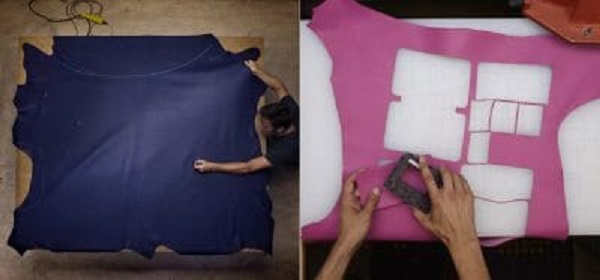13 October 2021
Reading Vogue Business’s piece on Hermès investments in leather, one almost seems to grasp a tone of disbelief. Because in the reportage from Maroquinerie de Guyenne, a leather goods facility with about 300 employees (the 19th of the brand in France) was recently inaugurated, a question hovers: “So the brand won’t abandon leather?”.Article by Italy’s La Conceria.

Where the market goes
The logical premise of Vogue’s skepticism is simple: there is a noisy demand for fashion free of animal-based materials on the market. It is a trend that is perhaps more noticeable in the newspapers than in the boutiques. But still there it is. Is Hermès not going to indulge it? “The vegan movement is developing quickly – replies Olivier Fournier, executive vice president with responsibility for corporate development and social affairs – but meat and farms have existed for centuries and still play an important role in the European economy.”. In short, the French brand, unlike other brands (like, for example, Volvo) has decided to respond to the market without simplifications and without disregarding its history. Indeed, continuing on its own path. Hermès financed the Myco Works startup, sure. But nevertheless “it confirms its commitment to animal skin”, acknowledges Vogue.
How sustainability is done
And, therefore, Fournier explains to the interviewer all the fields in which Hermès defines its sustainable strategy. Starting with the durability of the products, the first eco-friendly principle in which leather plays a fundamental role.
“We need to assure the customer that he is buying an asset destined to exist for a long time”. Then there is the quality of the workplace (which collides with some recruiting problems): “Our carbon footprint is low thanks to the artisan model – he continues -. If we want to maintain employment levels and indeed create job opportunities, we must grow. But our growth is limited by the ability to hire and train artisans”.
Equally important is the control of the supply chain. 80% of the brand’s production takes place in France, reports Vogue. The group as a whole has 64 production sites, (also in Italy, Portugal, Switzerland, the United States and Australia) and controls 7 tanneries (in Italy, the States and France), which comply with European regulations, the most stringent in the world.
And much more
Challenged in terms of leather sustainability, the top management of Hermès has a lot to tell. They can explain how they interpret transparency and traceability (e.g. with the laser hide marking project developed with CTC). They can also offer many numbers. “In the last year, Hermès has invested 1.4 million euros in optimizing the management of tannery waste – summarizes Vogue.
Between 2019 and 2020, hazardous industrial waste from the use of leather decreased by 17 tons. Scraps and offcuts are not treated as waste, but redirected to the Petit H collection. Dyeing waste – which represents 50% of total waste – is converted into alternative fuel”. In short, if the interviewer wanted to know from Hermès if the company is preparing the abandonment of the skin, the answer is clear. No.

使用條款 | 隱私政策 | APLF 可持續發展